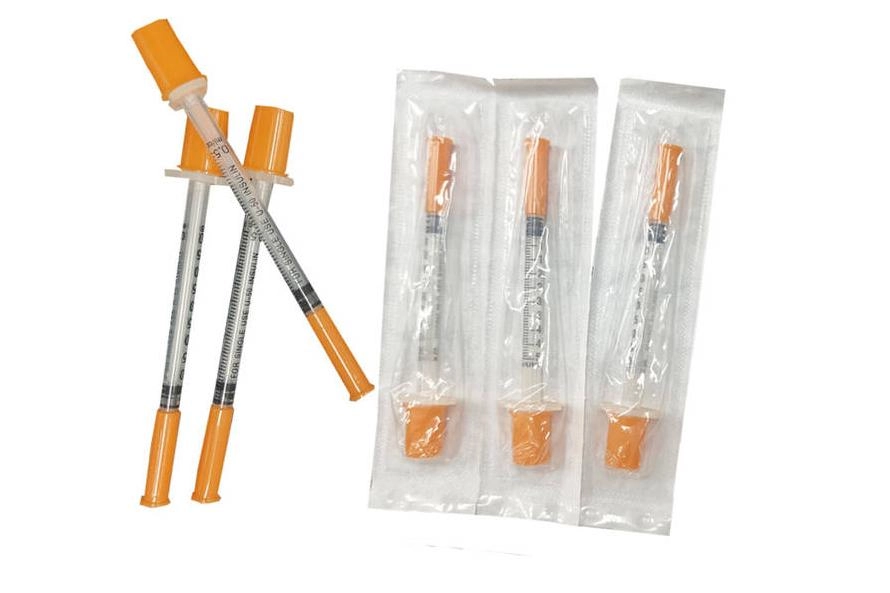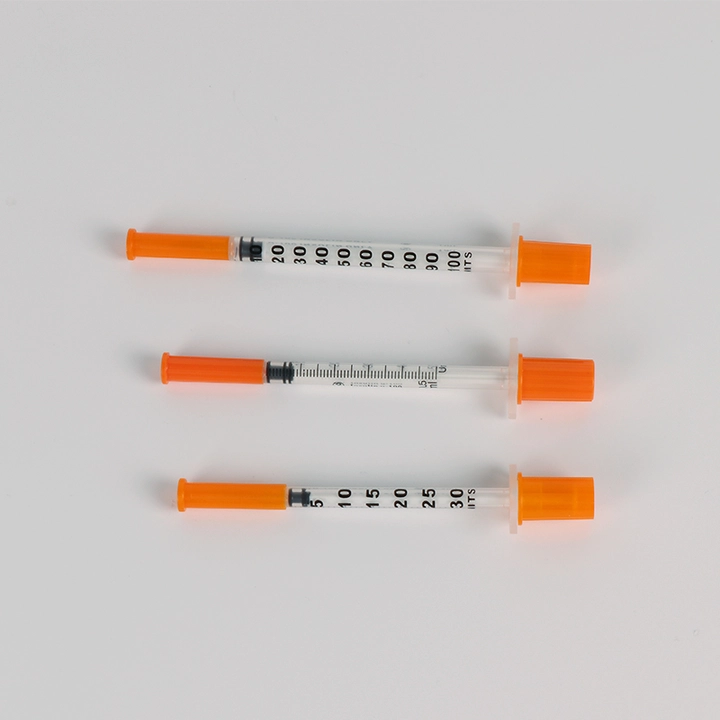
Understanding the Importance of Insulin Syringes
Role in Diabetes Management
Insulin syringes are a tool used to control diabetes by enabling the body to manage blood sugar levels using insulin in an accurate and effective manner—a fundamental part of diabetes management to avoid complications due to excess or deficient blood sugar.
Impact on Patient Health
Proper utilization of insulin syringes not only keeps blood sugar under control but also helps improve overall well-being in patients by lowering the risk of diabetes-related conditions like neuropathy and cardiovascular diseases and reducing pain and tissue injury at the point of injection for better treatment compliance and patient benefit through education of proper needle usage techniques.
Structure of an Insulin Syringe
Components of an Insulin Syringe
An insulin syringe consists of a few parts like the needle tip and cap to ensure a smooth subcutaneous injection process with the right dose of insulin measured out accurately using the marked lines on the barrel and protected by the cap until its ready for use.
Functionality of Each Part
All components of an insulin syringe play a part in how they work efficiently. The size and length of the needle are specifically chosen so that it can be easily placed in the skin but not push into the muscles. The markings on the syringe barrel are designed to enable precise measurement of the dose for diabetes control. The plunger should move freely inside the barrel so that insulin can be drawn and administered precisely. And don’t forget about the needle cover. It keeps everything until you’re ready to inject and helps prevent any infections.
Variations in Design
Insulin needles are available in varieties to meet various requirements with fixed or removable needles to provide consumers with choices based on individual preference or doctor’s recommendations. Syringes also have different levels of transparency in barrels to provide better visibility when drawing doses. All these design choices increase user flexibility and convenience to allow everyone to have a needle that meets their requirements.
Comparing Different Types of Insulin Syringes
Needle Gauge and Length Options
Selecting the gauge and diameter of the needle is crucial to allow injections to be efficient and comfortable for the user of insulin. Insulin needles come in gauges 28-31. As the number increases, the needle becomes narrower, so potentially less painful when injected. Coming in lengths of 4mm to 12mm, there is something to suit body types and preferred site. By choosing the gauge and length combination it’s possible to reduce pain and enhance consistency in injection schedules.
Differences in Barrel Capacity
Choosing the insulin syringe also depends on the size of the barrel it can hold. Commonly available in 0.3ml 0.5ml and 1ml capacities to cater to varying dosage needs. For patients needing doses, they might lean towards lower capacity barrels for accurate measurements whereas individuals requiring larger doses may go for higher capacity ones to minimize the number of injections needed in each administration session.
Considerations for Selecting the Right Syringe
Choosing the best insulin syringe is a question of several factors such as prescribing guidelines to follow and personal tolerance for needle size, in addition to the number of injections that must be taken on a daily basis and physical constraints such as ease of injection on the basis of a lack of dexterity.
Steps for Proper Use of Insulin Syringes
Preparing for Injection
Ensuring Cleanliness and Safety
Begin by hand-washing with soap and water or an alcohol-based hand sanitizer when soap is unavailable. Clean the injection area with an alcohol swab and dry it on the air before proceeding. Inspect the insulin vial closely for damage or contamination like color change or the appearance of particles in the liquid. Don’t forget to look at the expiry date so that the insulin does not lose potency.
Checking Dosage Accuracy
Precision in the measurement of the dose is necessary in diabetes control. Hold the vial of insulin. Roll it between your hands slowly to mix the solution uniformly without the formation of bubbles. Then draw an amount of air into the syringe equivalent to your dose of insulin and inject this air into the vial. Next, turn both the vial and syringe upside down while keeping the tip of the needle in the liquid. Slowly pull back on the plunger to withdraw the insulin dose watching for air bubbles. If you see any air bubbles in the syringe while preparing it to use, you may tap the syringe lightly to make the bubbles rise to the top. Then push down slightly to release them from the syringe before proceeding.
Administering the Injection
Techniques for Minimizing Discomfort
To reduce any pain when getting an injection choose the size and length of the needle according to what feels comfortable for you and what your healthcare provider suggests. Gently hold a section of skin where you plan to inject to make it easier for the needle to go in. Push the needle in swiftly at a 90-degree angle if it’s short or at a 45-degree angle if it’s longer based on your build and where fat is distributed on your body. After putting in the needle let go of the skin you were holding. Slowly press down on the plunger to give yourself the insulin. Remove the needle quickly. Then gently press with a clean cotton ball or gauze if needed.
Rotating Injection Sites Effectively
Rotating where you inject is key to avoiding lipodystrophy and maintaining insulin absorption rates. By switching between areas like the belly, thighs,bottom and upper arms while making sure not to inject in the same place too often, you can keep your injections comfortable and help tissues recover between doses for consistent insulin absorption speeds.
Medco’s Insulin Syringes: A Preferred Choice

Reasons to Choose Medco Products
Quality Assurance and Reliability
Medco’s insulin syringes are well known for their dedication to quality and reliability in providing insulin syringe consistently to users like you and me. These syringes go through thorough tests to ensure they are sterile and functional before they get into the hands of customers like us who rely on them daily for our health needs. Their focus on delivering top-notch medical products guarantees that every syringe meets the safety and performance benchmarks we expect from a trusted brand like Medco.
Innovative Features and Designs
Medco’s syringes are crafted with features that are easy to use and cater to a wide range of needs. They come with thin needles to minimize pain during injections and transparent barrels with prominent markings for effortless reading of dosages. The design is ergonomic for handling and precision during use making it suitable for individuals with different levels of hand dexterity.
Customer Reviews and Feedback
Medco’s commitment to delivering high quality products that improve the diabetes management experience is evident in customer feedback. The syringes from Medco are often praised for their user design and minimal discomfort during injections.They are reliable in ensuring dosages which play a crucial role in promoting adherence to treatment plans for individuals dealing with diabetes.
Ensuring that people using insulin syringes understand these factors is crucial for them to use them correctly. It can reduce the likelihood of errors in administration or dosage mistakes.
FAQ
Q: For what do they use insulin syringe?
A: The majority of persons who have Type 1 or Type 2 diabetes use insulin syringes to inject insulin that involves drawing the insulin from a vial first.
Q: Insulin syringe how many times it may be used?
A: Insulin needles are employed three times without affecting blood sugar control; however, it is always better to use single-use needles if one has the means.




